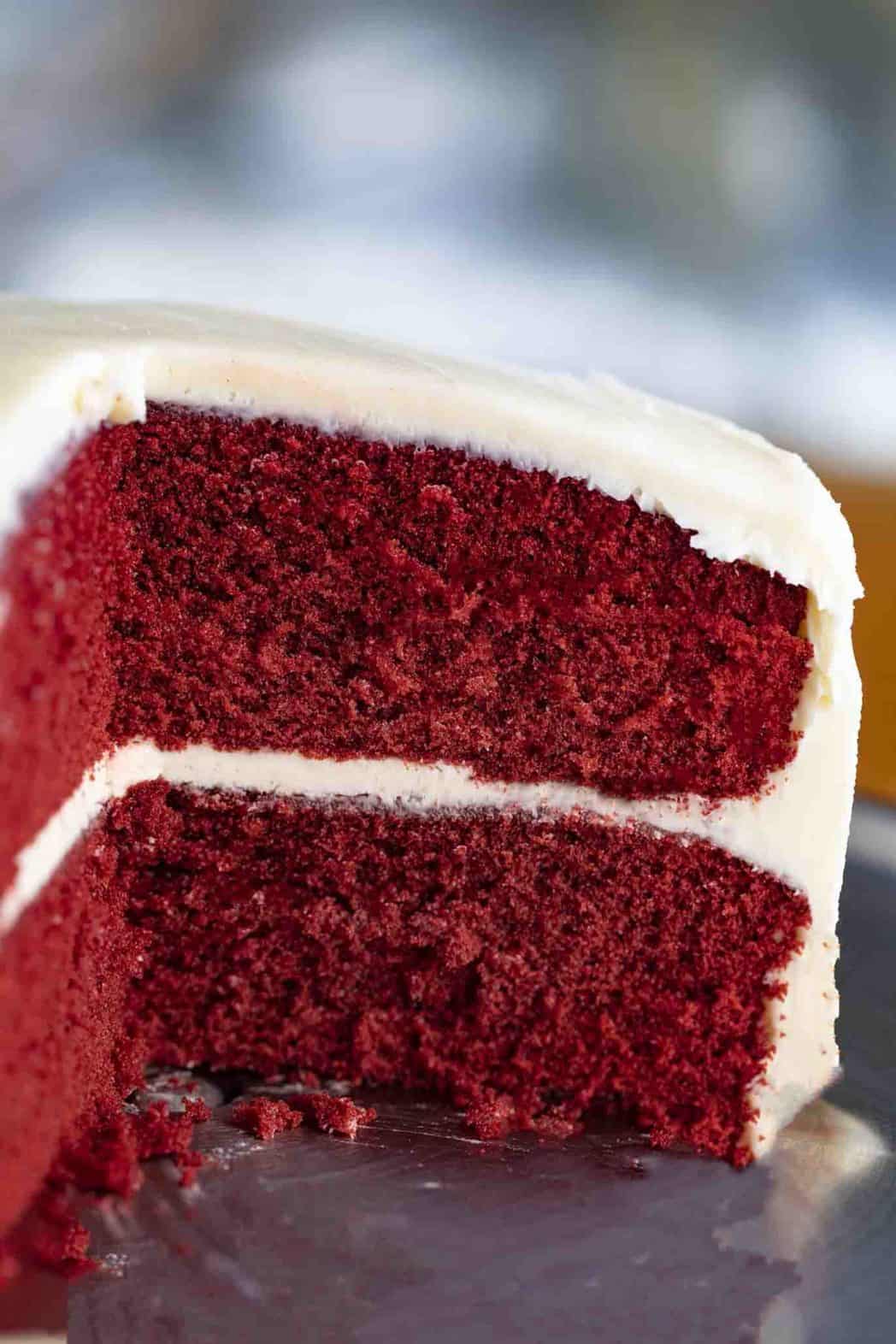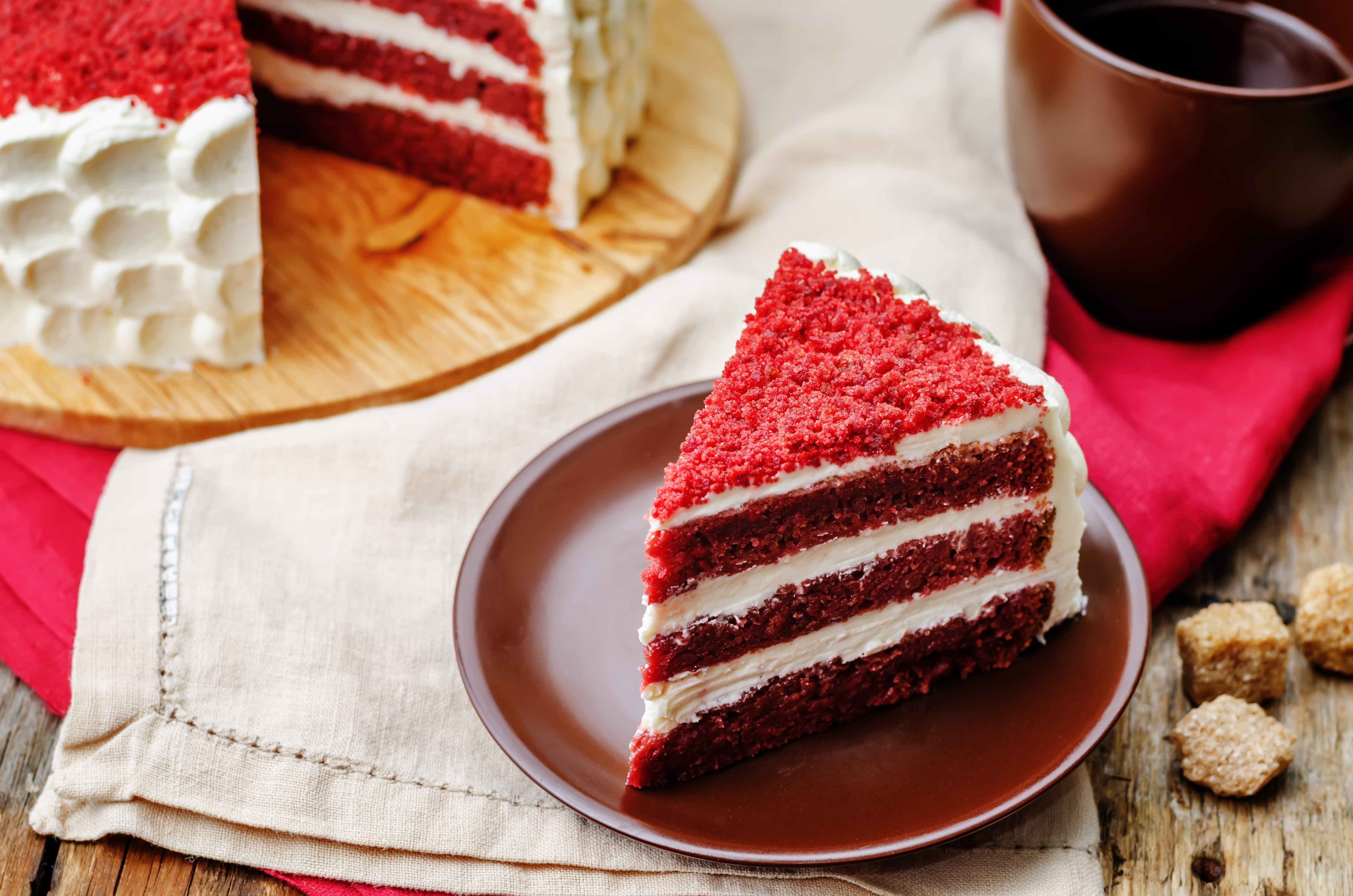

It’s now time to assemble the cake – we’re one step closer to eating! Remove one bowl of the icing mixture from the fridge and using a large serrated knife, level the sponges but make sure to save any off-cuts for decoration. Divide the icing mixture equally between two small bows and leave to chill in the fridge until needed. In a large mixing bowl, whisk together the double cream, cream cheese, icing sugar, mascarpone, vanilla extract and salt using the stand mixer fitted with the whisk until the mixture is combined entirely and can hold in stiff peaks. We have now made the sponge component of the cake, whilst it cools, let’s make a start on the cake’s filling and icing. Leave the sponges out to cool whilst still in the tins for 5 minutes and then gently turn them out onto your wire rack to cool completely. Using the middle shelf in the oven, bake for 20-25 minutes until the sponges have risen and your skewer is able to pierce the centre of each sponge and come out clean. Now that the cake mixture has been created, divide the mixture equally between the three lined tins and spread it level. In a small bowl, mix together the bicarbonate of soda and vinegar and add to the large mixing bowl and gently beat until the texture becomes smooth. Continue to mix in the remaining buttermilk mixture and flour alternately until thoroughly combined. Mix one third of the salt and buttermilk mix to the mixing bowl with the existing mixture, then add one third of the flour (111g). Using the other jug and hand held whisk, add the salt and buttermilk and whisk together. Once the paste has formed, add this to the egg, butter and sugar mixture and mix again until combined. Grab your small jug and mix the vanilla extract, cocoa powder and red food colouring and hot water together to create a paste. Once the butter and sugar has been combined thoroughly, add the eggs, beating well between each edition until the mixture has fully combined. Using a stand mixer that has been fitted with the beater, mix the butter and sugar on a medium speed for approximately 3-5 minutes, using a spoon to scrape down the inside of the bowl from time to time until the mixture has become pale and creamy. To do this, you’ll want to heat your oven to 200℃, 180℃ fan or Gas 6. 3 x 17cm Round Cake Tin Greased with Baking Paperįirst of all, we’ll start baking our sponges.Medium Piping Bag Fitted with Medium Closed Star Nozzle.400g of Full-Fat Cream Cheese, at room temperature.Natural cocoa is known to produce a lighter colour, whereas, Dutch process cocoa produces a darker red cake as the cocoa has been washed with potassium carbonate to neutralise the acidity. *The colour of the cake can be dependent on the type of cocoa that you use in the recipe. 280g of Unsalted Butter, cubed & softened.Serves: 12-16 Hands on Time: 1hr 30mins Baking Time: 25mins Ingredients for the Sponge: Some red velvet cake recipes to this day use beet juice, but mostly, recipes now call for the use of red food colouring as an easy way to achieve a vivid colour without interfering with the cake’s texture and flavour.

The introduction of beet juice made red velvet cake even more smooth and gave the cake its striking crimson appearance that we all know and recognise today. Civilians and soldiers alike had to live off of rations, despite the rations including butter and sugar, bakers opted to use beet juice. Rombauer included a recipe explicitly for the dessert ‘Red Velvet Cake’.Īlthough the cake already had a natural red colour, it wasn’t until the Second World War that the cake’s signature red colour was introduced. It wasn’t until 1943 that the popular recipe book The Joy of Cooking (1943) by Irma S. The smooth texture earned the cake the title ‘velvet cake’, and thee distinctive red colour is believed to have been caused by a chemical reaction between the cocoa and the natural acids in the ingredients. In replacement of fruit and nuts, bakes added coca which helped to break down and reduce the coarse texture of flour. In the Victorian Era, bakers sought out a way to bake cakes that were luxurious and smooth which resulted in the velvet cake.


Between the thirteenth and eighteenth century, cakes were frequently filled with bulky ingredients such as chopped nuts and dried fruit. With a resurgence in popularity, many believe that red velvet cake is a new and trendy cake however, velvet cake actually dates back to the nineteenth century.


 0 kommentar(er)
0 kommentar(er)
